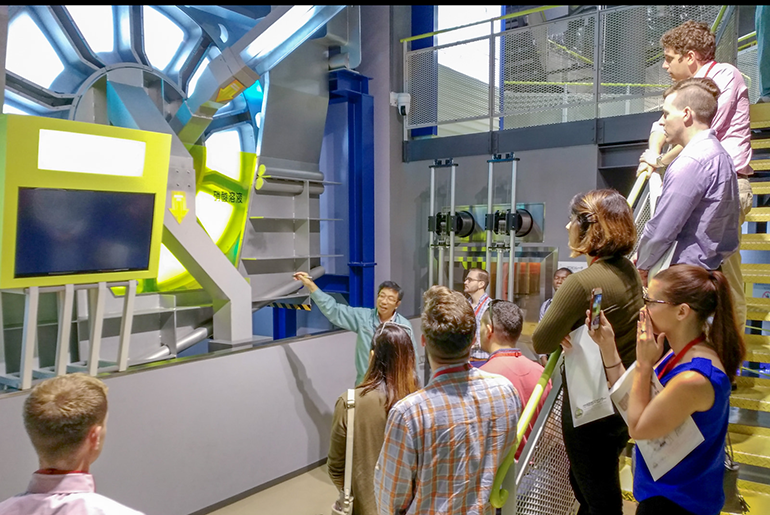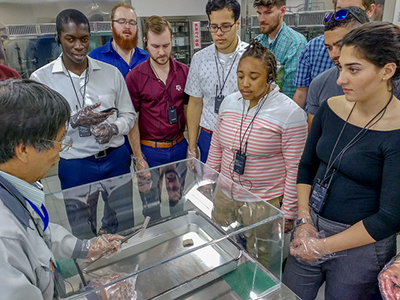
From June 23-30, a group of graduate students, faculty and national laboratory staff members participated in the Nuclear Facilities Experience (NFE), which took place in various locations across Japan. The NFE was jointly coordinated by the Center for Nuclear Security Science and Policy Initiatives (NSSPI) and Argonne National Laboratory (ANL), with assistance from the Japanese Integrated Support Center for Nuclear Nonproliferation and Nuclear Security (ISCN).
The facilities tour was led by Dr. Claudio Gariazzo, a nuclear engineer in the Strategic Security Sciences group at ANL, and NSSPI Assistant Research Engineer Dr. Evans Kitcher. The graduate students were selected based on their specializations in nuclear nonproliferation-related topic areas. The nine students represented Texas A&M University, the University of Tennessee-Knoxville, the University of California at Berkeley, the University of Illinois at Urbana-Champaign, the Middlebury Institute for International Studies and Virginia Commonwealth University. They were joined by one faculty member from the University of Tennessee-Knoxville. The five early-career research staff members came from Sandia National Laboratories, Los Alamos National Laboratory, Brookhaven National Laboratory, Pacific Northwest National Laboratory and Argonne National Laboratory.

The NFE is a unique opportunity for graduate-level engineering and policy students from U.S. universities and early-career professionals from U.S. national laboratories to visit nuclear fuel cycle facilities in foreign countries. It provides experiential understanding of facility operations, nuclear materials management and applied material safeguards. Practitioners and facility operators make presentations and lead discussions on the practical application of safeguards and security measures. Participants have the opportunity to witness first-hand how nuclear safeguards are implemented at various types of facilities, some of which are not found within the U.S. Additionally, the NFE provides excellent networking opportunities for participants to strengthen relationships among students, staff, faculty and professionals while travelling and experiencing a foreign country.
This year’s NFE began with a trip to the Japan Atomic Energy Agency headquarters in Tokai-mura, where participants visited the Tokai Reprocessing Technology Development Center, the Plutonium Fuel Development Center, the Virtual Reality System and the Physical Protection Training Field. From there they traveled to Rokkasho Nuclear Fuel Cycle Plant and visited their enrichment facility, sub-surface disposal test cavern, low-level waste disposal center, J-MOX construction site and the reprocessing facility, including the spent fuel receiving/storage and vitrified waste storage.
They then spent a day at the Tokyo Institute of Technology, where they met with students and faculty and attended a presentation by the International Atomic Energy Agency about the safeguards activities at the Fukushima Dai-ichi Nuclear Power Plant and the Rokkasho Nuclear Fuel Cycle Plant. They traveled from Tokyo to the Monju Fast Reactor.
The final stop of the NFE was Hiroshima, where participants visited with a survivor of the Hiroshima bombing and toured the Hiroshima Peace Memorial Museum and Peace Park. The visit to Hiroshima highlights the importance of nuclear safeguards and security to keep the world safe from nuclear weapons.
The NFE is made possible under a grant provided by the National Nuclear Security Administration’s Office of International Nuclear Safeguards. The NFE program is set to continue for another five years.
